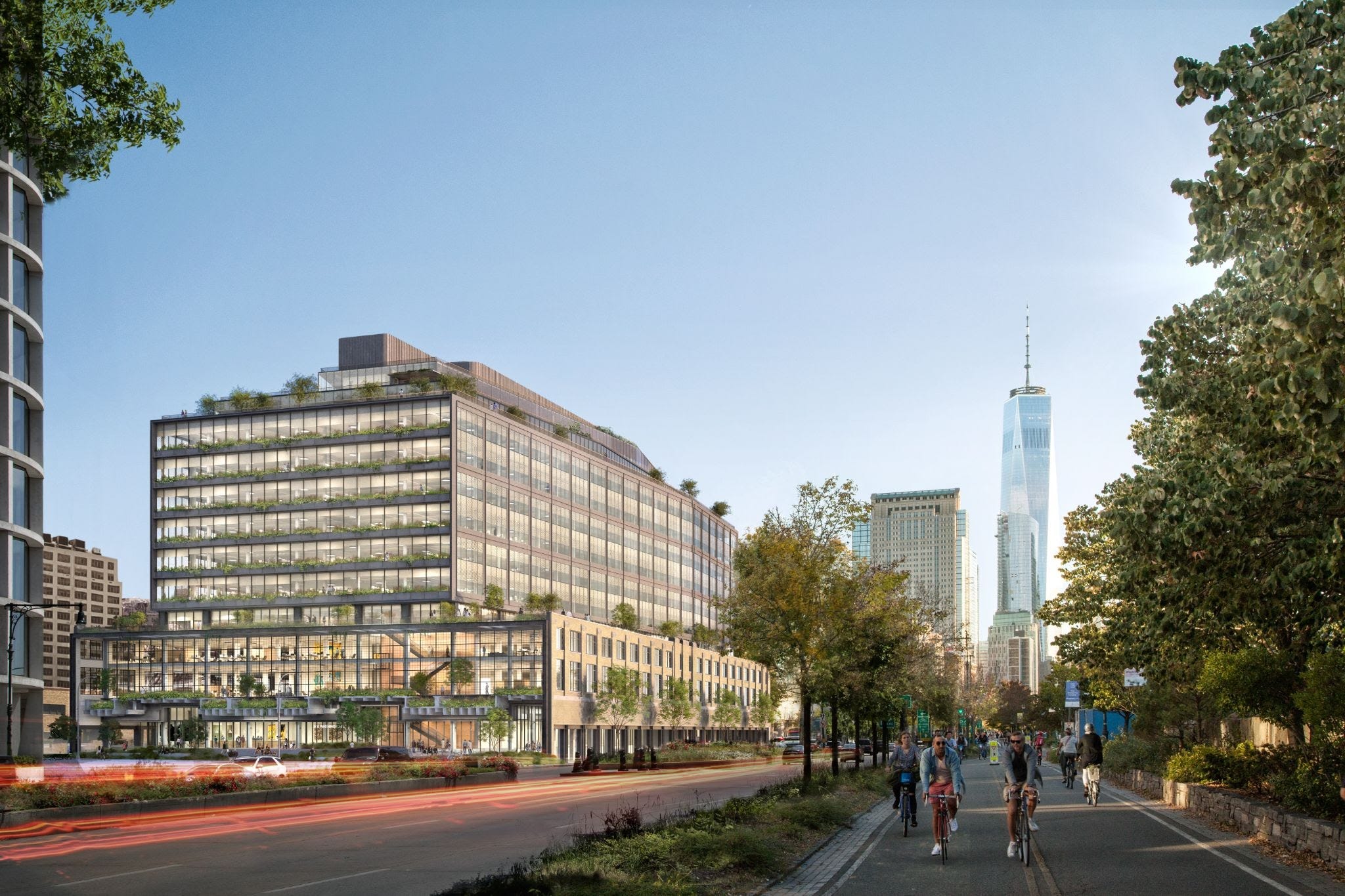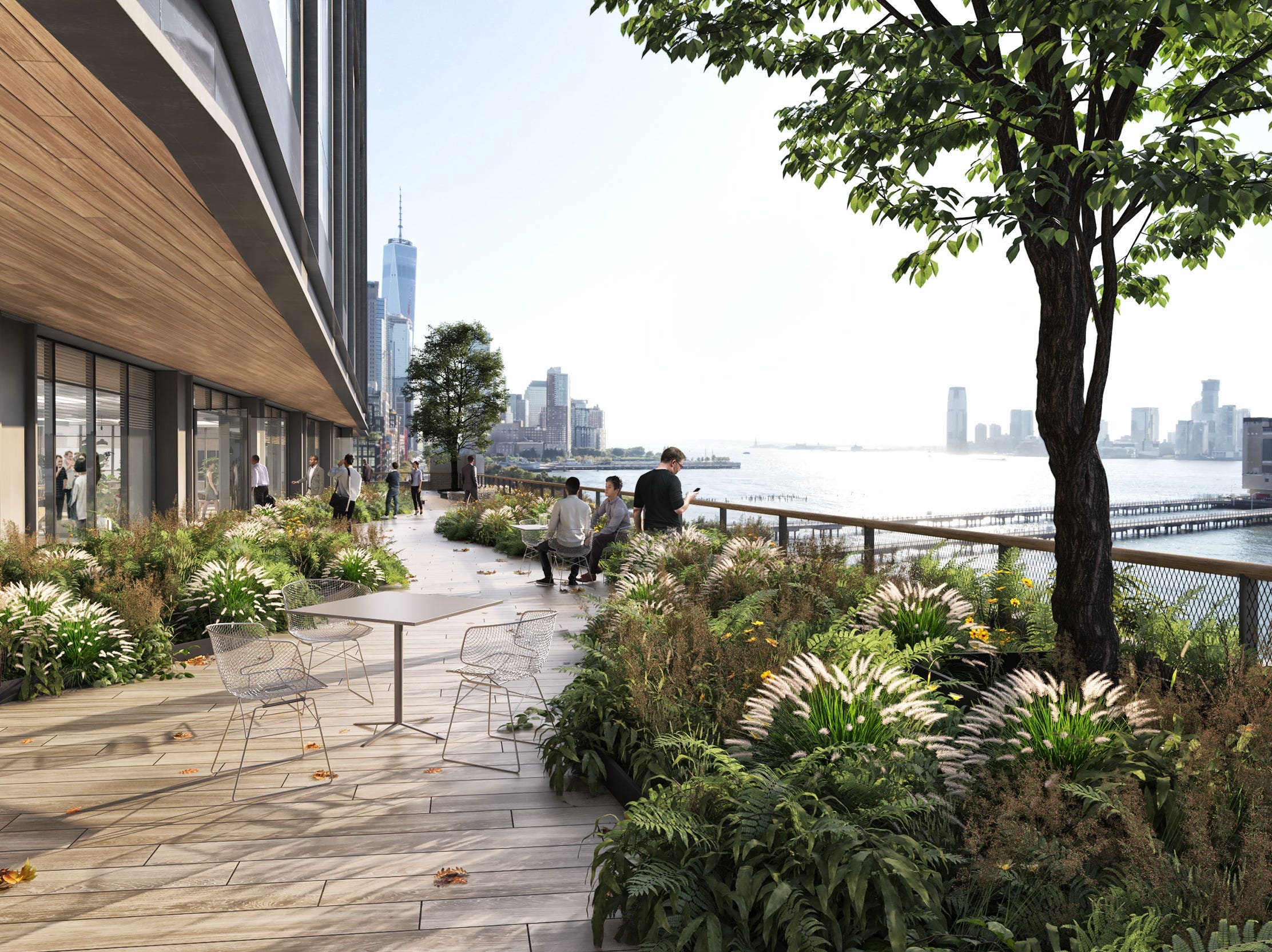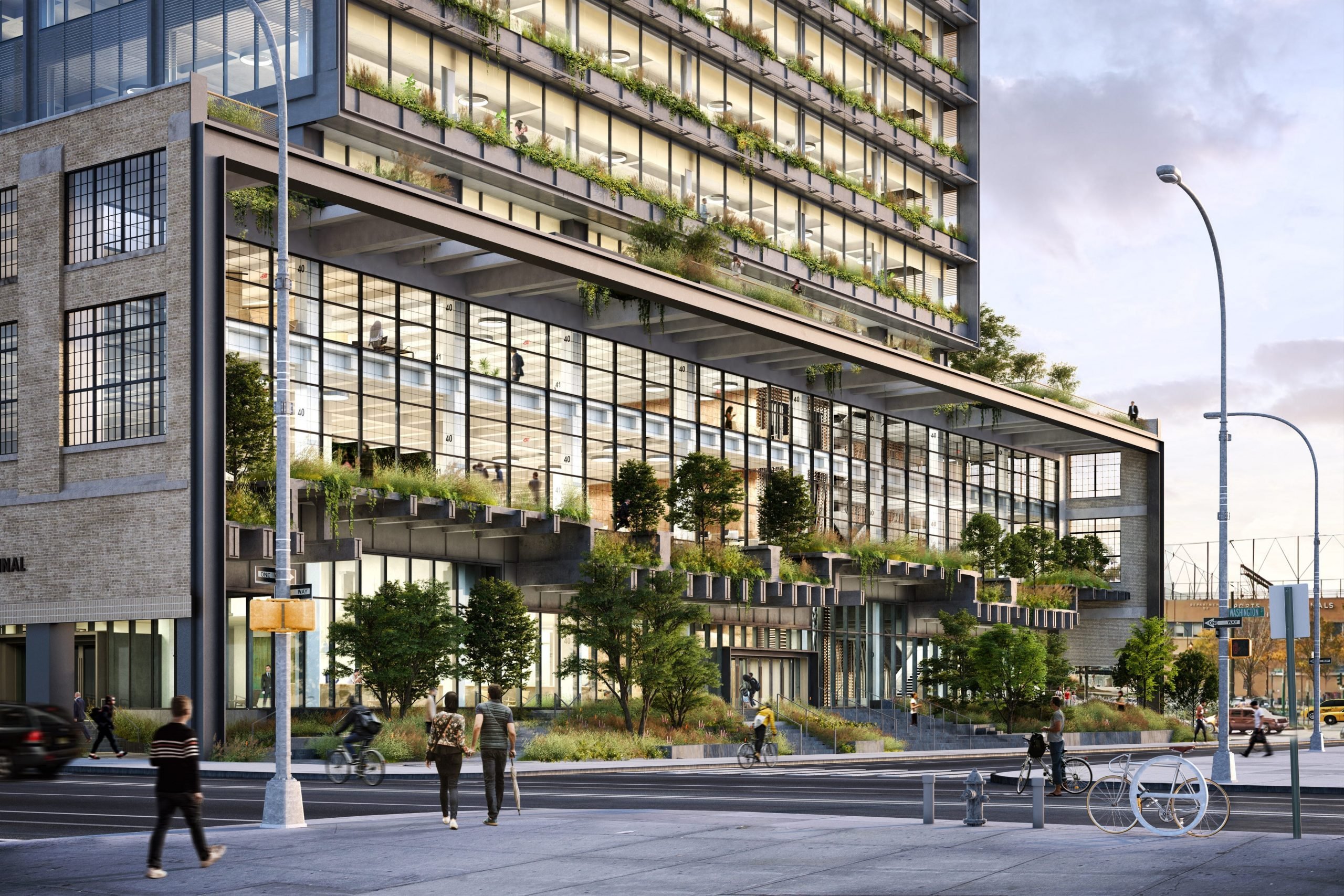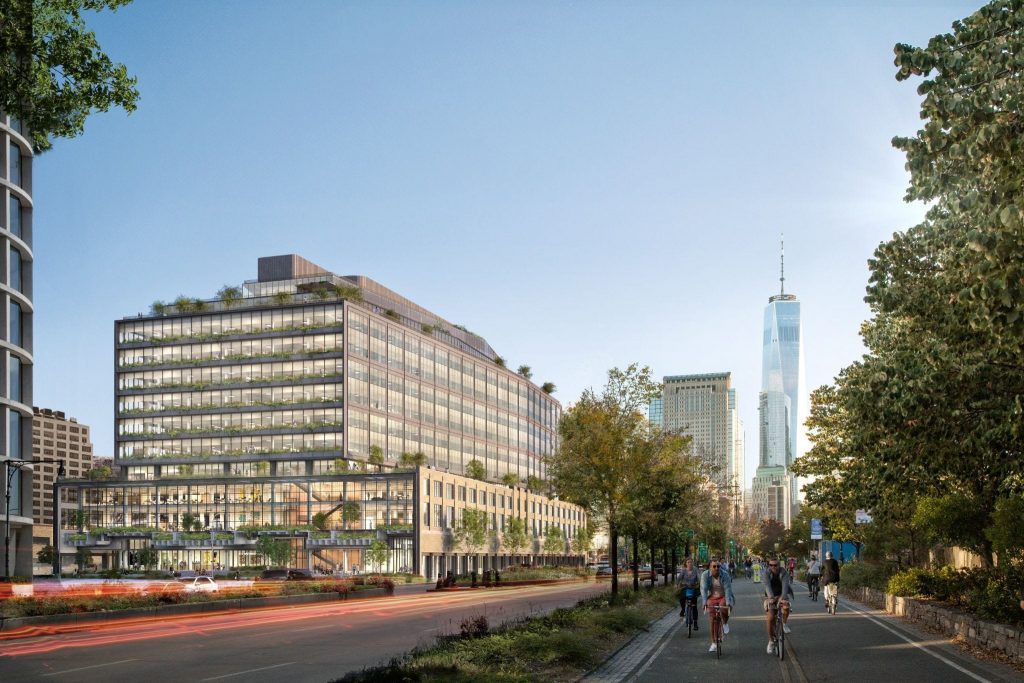
- Google is expanding its New York City presence with the $2.1 billion purchase of St. John's Terminal.
- The 'biophilic' office has welcomed birds, bees, and a "resident praying mantis" to the space.
- Its green layout is all about the "recruitment and retention of talent," the office's architect told FT.
Google is redefining office perks from nap pods to birds, bees, caterpillars, and a "resident praying mantis," according to a Tuesday report by the Financial Times.
The tech giant is betting big that the next generation of talent will prefer to work in-person at its $2.1 billion campus in Manhattan – one of the most expensive sales of an office building in US history.
Rick Cook, the architect of the workspace, intentionally designed the massive office building known as St. John's Terminal with the natural environment in mind. He calls it "biophilic," a term that encapsulates the human tendency to seek connections with nature.

Cook's office designs go beyond the millennial obsession with houseplants. From 165-pound honey harvests to in-house ecologists, Google is all in.
"All of this, make no mistake, is about recruitment and retention of talent," Cook told FT's Joshua Chaffin. "People are going to take a tour and say, 'Do I want to be in that glass-and-steel tower or that cool Google building?'"

Google has long been a proponent of the power of office perks and creative office-space conversions. The company has converted a number of unusual spaces into offices around the world, including a former airplane hangar, a former vodka factory, and two former Nabisco factories.
Googleplex, the main Mountain View campus, added 31,276 square feet of themed amenity space in 2019 that includes three cafes, a fitness center, and seating areas themed around the history of salt production in the area.
"St. John's Terminal is a former freight facility that is being reimagined into a highly sustainable, adaptable, and connected building," a Google spokesperson said in a statement. "Its biophilic design connecting people more closely to nature will add numerous outdoor open spaces and reconnect the Hudson Square neighborhood to the waterfront. The building will also offset 100% of its carbon in support of Google's ambitious carbon goals."
